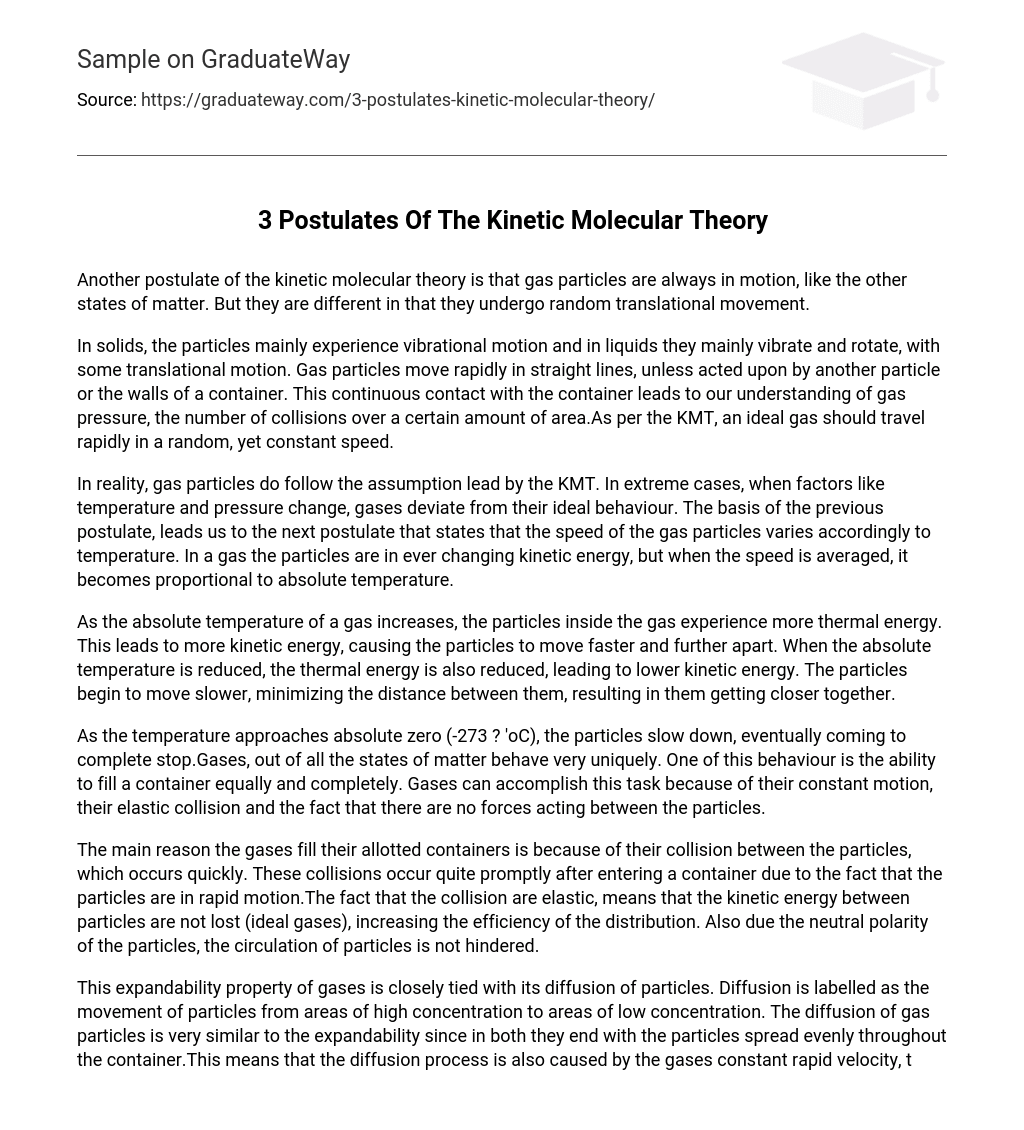According to the kinetic molecular theory, gas particles are constantly in motion just like other forms of matter. However, their movement is distinct in that it is characterized by random translation.
In solids, the particles primarily undergo vibrational motion. In liquids, they mainly vibrate and rotate, and also experience some translational motion. Gas particles move in straight lines at high speeds, unless influenced by another particle or the container walls. This constant interaction with the container enables us to comprehend gas pressure, which is determined by the number of collisions occurring over a specific area. According to the Kinetic Molecular Theory (KMT), an ideal gas should exhibit rapid and random motion at a consistent velocity.
The gas particles, in reality, adhere to the assumption proposed by the KMT. However, when conditions like temperature and pressure change significantly, gases deviate from their ideal behavior. Building on the preceding postulate, the subsequent postulate asserts that the velocity of gas particles fluctuates in response to temperature. Within a gas, the particles possess constantly changing kinetic energy, but when averaged, their velocity is directly proportional to absolute temperature.
As the absolute temperature of a gas rises, the particles within the gas gain additional thermal energy, resulting in increased kinetic energy and a wider distance between particles. Conversely, decreasing the absolute temperature reduces thermal energy, resulting in lower kinetic energy. Consequently, the particles slow down and come closer together, minimizing their distance apart.
As the temperature gets closer to absolute zero (-273 °C), the particles slow down until they come to a complete stop. Gases behave in a very distinctive way among all states of matter. One such behavior is their ability to completely and equally fill a container. Gases can achieve this due to their constant motion, elastic collisions, and the absence of forces between particles.
The gases fill their containers primarily due to the fast collisions between particles. These collisions happen soon after entering a container because the particles are moving rapidly. The elasticity of these collisions, which means that kinetic energy is not lost (in ideal gases), enhances the effectiveness of distribution. Furthermore, the particles’ neutral polarity allows for unhindered circulation.
This property of gases, expandability, is closely connected to the diffusion of particles. Diffusion refers to the movement of particles from areas of high concentration to areas of low concentration. The diffusion of gas particles bears strong resemblance to expandability, as both result in the particles being evenly distributed throughout the container. Consequently, the diffusion process is influenced by the gases’ constant rapid velocity, their perfectly elastic collisions, and their neutrally charged particles.
Diffusion occurs when a person wearing strong perfume enters a classroom. Initially, the perfume scent remains limited to the individual. However, over time, the smell spreads throughout the entire classroom, becoming evenly distributed.





